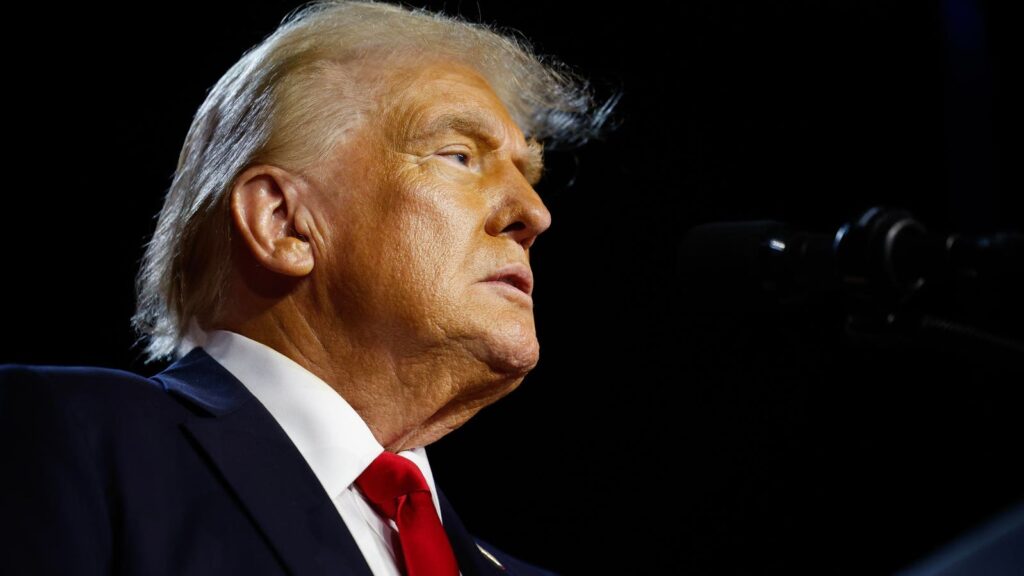The 2024 presidential election results indicate that Donald Trump is likely to regain the presidency, with significant repercussions for student loan forgiveness and repayment efforts impacting millions of borrowers across the nation. In contrast to Vice President Kamala Harris’s campaign, which emphasized the Biden administration’s successes in providing student debt relief—benefiting over five million borrowers—Trump has consistently criticized these initiatives. With a Trump administration on the horizon, the landscape for student loan borrowers may shift dramatically, leading to concerns about the future of mass loan forgiveness programs and associated regulations.
Mass student loan forgiveness, which has gained traction in recent years, seems to be on the verge of elimination following Trump’s electoral victory. The political divide surrounding this issue has intensified, with many Republican lawmakers staunchly opposing broad debt cancellation. Recent judicial challenges, including a Supreme Court ruling that struck down President Biden’s initial mass forgiveness plan, foreshadowed difficulties for large-scale debt relief. With legal proceedings surrounding Biden’s alternative plan already suspended, Trump’s administration is anticipated to pursue policies that will further hinder any initiatives aimed at widespread debt cancellation.
Additionally, under a Trump presidency, several regulations designed to expand access to income-driven repayment (IDR) plans will likely face repeal. The Biden administration’s approach to alleviating student loan burdens relied heavily on regulatory adjustments that sidestepped contentious congressional battles. This included the introduction of new IDR plans such as the SAVE plan, which significantly reduced monthly payments for borrowers. However, Trump’s administration is expected to utilize the same regulatory framework to undo these reforms, limiting options for borrowers. Essential programs—such as Public Service Loan Forgiveness (PSLF) and Borrower Defense to Repayment—may similarly be at risk, prompting fears that access to essential relief channels could be slashed.
Some student loan forgiveness and repayment programs are more complicated to repeal due to their creation by congressional legislation rather than regulatory authority. For instance, popular programs such as PSLF and Income-Based Repayment (IBR) require an act of Congress for modification or elimination. Nevertheless, the Trump administration could still impose stricter regulations or reduce oversight, ultimately making it much harder for borrowers to qualify for these programs. The implications of this scenario may be exacerbated if Republicans maintain control of the House, as they could push legislation that alters or dismantles these established programs, placing millions of borrowers’ relief efforts in jeopardy.
While the full scope of Trump’s plans for student loans remains unclear, recent Republican proposals hint at potential strategies his administration could pursue. Some GOP-backed legislation suggests a reworked income-driven repayment plan, which would maintain income-based payments but eliminate the possibility of forgiveness. Instead, borrowers would only be relieved of debt obligations after payments equaled the amount required under a standard repayment plan. The administration may also target the elimination of existing federal student loan offerings, which could compel students and families to turn to the perilous realm of private loans, augmenting financial risk and exacerbating the student debt crisis.
Finally, the issue of bankruptcy reform represents a wildcard in the debate over student loans. Currently, discharging student loans in bankruptcy is a complicated process, but there have been bipartisan discussions about making this more attainable. Whether such reform may gain traction under a Trump administration, particularly with a potential Republican majority in Congress, remains uncertain. In summary, the results of the 2024 election indicate a major shift in the future of student loan forgiveness and repayment programs, leaving millions of borrowers vulnerable to policy transformations that could severely restrict access to relief and heighten their financial strain.

